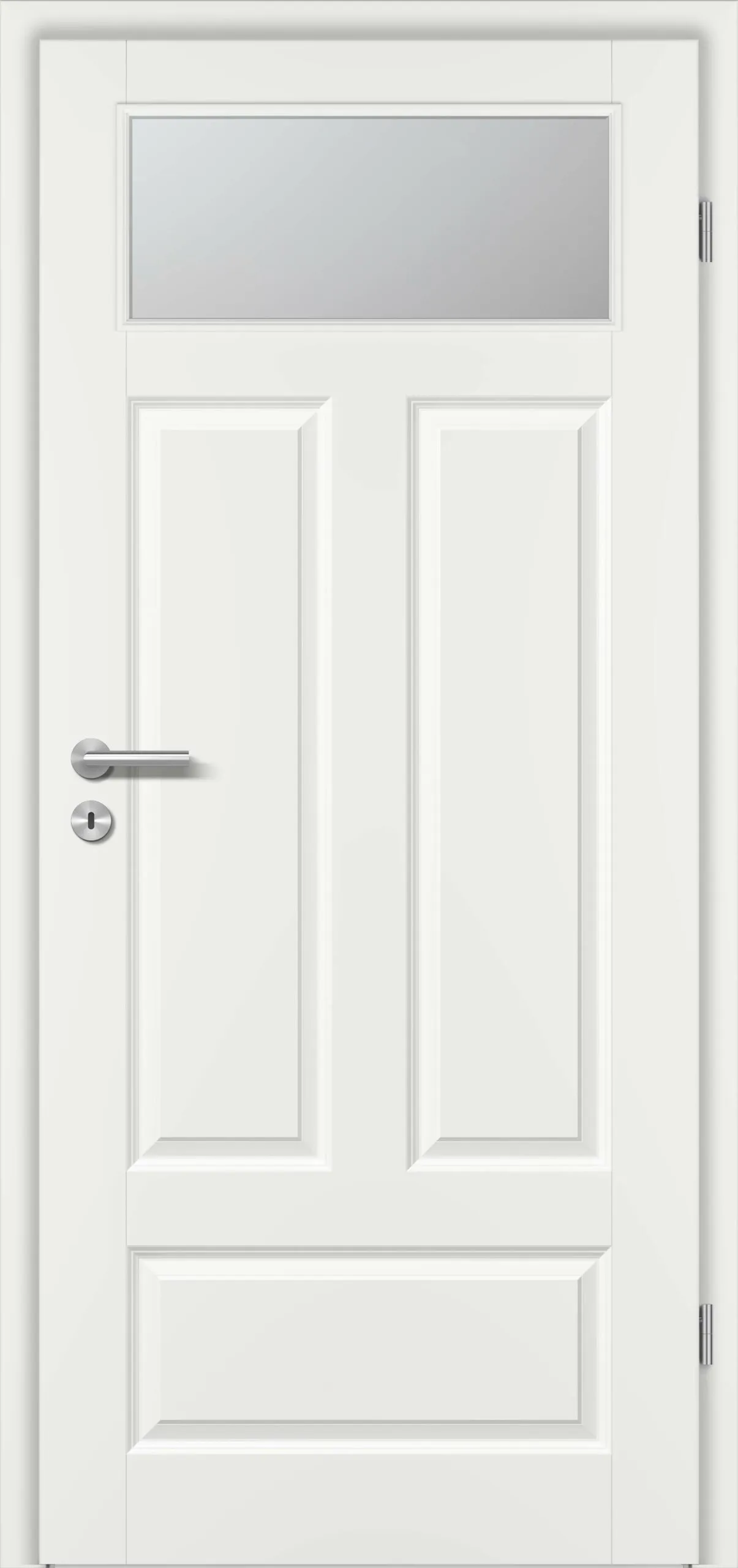The blue eye - A look at Greek doors
Greek architecture is a dream of white cubic houses with blue roof domes, doors and windows. In fact, you can only experience this image on the klycadian islands of Greece, such as Santorini or Mykonos. What makes the klycadian architectural style so unique? What motifs are hidden behind the contrasting colours? And what are the special features of Greek doors?

Klykaden architecture: a dream in white
The houses in the Clycadian style are geometrically formed and have no decorative ornamentation. The buildings stand tightly together in small alleyways to create as much shade as possible, as it gets very hot here when the sun shines. The walls of the houses are up to 80 centimetres thick so that as little heat as possible penetrates into the four walls. For this reason, the windows are also narrow. The bright white lime walls are a characteristic feature of Greek buildings. Although this looks wonderful in contrast to the blue doors, the white colour was not chosen for aesthetic reasons. White reflects the sunlight and thus allocates heat away from the walls of the house. This effect and the breathable property of lime, which ensures good air exchange, saves electricity for air-conditioning units. But lime has another benefit: It keeps vermin away. The residents are so convinced by the lime paint that they renew it every year after the winter.
The semi-circular roof structures are not based on an aesthetic decision either. As wood has always been in short supply on the Clycadian islands, there was no question of building wooden roofs. Instead, the Greeks used material that existed in abundance: pumice, a light-coloured volcanic rock. In contrast to other rocks, pumice is very light and at the same time dimensionally stable.

Construction of Greek doors
But what do the doors of these beautiful buildings look like? From the 12th century onwards, single Greek islands belonged to a Venetian colony. The influence of Italy can be seen in the construction of the doors, among other things.
The door design contrasts with the simple and smooth surfaces of the house walls, as detailed structure can be recognised here. Most of the doors have a strictly symmetrical coffered look. As was customary for the period, the doors were set into brick work with semi-circular top levels. To allow a little more light into the tightly built houses, narrow glass openings have been integrated into some of the doors.


What's the blue colour all about?
In fact, there are different explanations for the meaning of blue. This version is often heard: The colour blue stands for the sea and the sky and the colour white for purity and independence.
However, the colour blue actually has something to do with a widespread superstition in ancient Greece. Back then, people tested the colour blue to ward off the "evil eye". The evil eye stood for any negative feelings, anger or jealousy. To keep these bad emotions away, the blue eye was created as a symbol of freedom as the antithesis to the evil eye. The colour blue was thus transmitted into the everyday life of the Greeks and as nobody wants bad feelings in their own house, the doors, windows and roofs were also painted blue.
A new take on Mediterranean door design
Today, the Mediterranean door style can be wonderfully integrated into modern living concepts. Arbonia offers high-quality door solutions that junction traditional forms with modern functionality - in elegant white lacquer (RAL 9016) and with loving details such as a cassette look or glass openings.
COMO door design by GARANT
Double frame panel with glass opening - ideal for corridors with daylight requirements. Inspired by the traditional light openings of Greek doors.


PARMA door design by GARANT
Classically symmetrical with a striking cassette look - reminiscent of Venetian-influenced door designs on the Cyclades.